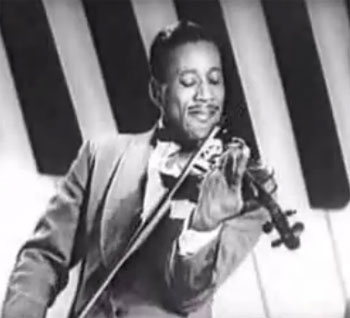Fly Fishing Jazz: “If It Ain’t Got That Swing…”

OKAY, so, by way of comment on my last column, “salmo” baited me into a topic. With all due respect to Duke Ellington, let’s talk about swinging flies.
Thing is, “swinging” wet flies—be that on a steelhead river, or in a trout stream—is nothing new at all. Isaak Walton had swinging wet flies down, hundreds of years ago. And in my family, we had a rule that little kids learning to fish had to use wet flies and work downstream. Part of that, of course, was because the older anglers didn’t want the youngsters fighting the currents in a river, working upstream. The other rationale was that wet flies work wonders as they’re swung through downstream currents. Success breeds interest. And you can learn and catch a lot by swinging flies downstream.
As such, I often wonder why more anglers don’t swing wets these days.
Many times, I have found myself in sight fishing situations where I saw a big trout in a river, and it is surfing the hydraulic “cushion” in front of a rock in the current. I’ve tried the standard high-stick nymph rig to catch those fish, to no avail. I swerve streamers over their faces… and that works sometimes. I’ve stepped upstream, and let a dry fly float right into the zone, with a perfect drag-free drift. Only sometimes does that get bit. As often as not, the dry fly gets bit as it’s swinging out of the zone.
But the nymph on the swing—particularly the presentation when that nymph drifts into the feeding zone low, then lifts and flutters—is often an offer too good for the trout to refuse.
Sometimes your classic “wet flies” work wonders; bugs like a Royal Coachman (wet) or a Mickey Finn will do the job. But I’ve found that some of our newest, bestest nymph flies—shown the right way—often work better. A bead-head Prince nymph… a Hare’s Ear… a 20-Incher… or, in skinny, clear water, a Barr Emerger. Charlie Craven’s Two Bit Hooker, with the beads tied in the thorax, might well be the ultimate nymph-swung-wet bug on the planet.
Thing is, the presentation isn’t so much a side-to-side deal… it’s all about the down-to-up. Swiping flies laterally might do the trick. But I’ve found that it’s much more of a vertical operation (way more than it is a horizontal challenge). Drop the bug in the feeding zone, in plain sight of Mr. Trout, and then have it lift to the surface, like a naturally hatching insect. Simply stop the line, the current lifts the fly as the line gets taught, and your chances of getting bit go up exponentially.
“It don’t mean a thing if it ain’t got that swing.” But remember: it isn’t a side-to-side thing, it’s a down, then up, thing. Those bugs (trout food) don’t naturally traverse cross-current. They go straight up, from the gravel on the bottom of the river to the surface. Steelhead… salmon… hit ‘em in the head. Swipe that fly. But in trout fishing, the lift is the deal, and that can happen very effectively with your standard size #14 bead-head Prince nymph, provided you know how to make your fly behave.
If you put yourself in a position to make the cast and, more importantly, if you can make the right downstream presentation with a lifted nymph, you just might surprise yourself by fooling some really smart (and big) trout.











